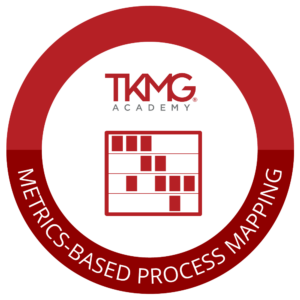Metrics-Based Process Mapping (MBPM)—developed by Mike Osterling and Karen Martin—is a tactical-level mapping approach that enables improvement teams to make effective, data-based decisions to design more efficient and effective processes and measure ongoing process performance.
This process mapping technique—which is used to drill down from a value stream map or provide the input for developing standard work—integrates the functional orientation of “swim lane” process maps with key time and quality metrics.
In this course, Karen Martin teaches the step-by-step process for using the metrics to identify waste and design better workflows.
You will learn:
-
The difference between processes and value streams
-
When to map processes
-
How to create current state Metrics-Based Process Maps (MBPMs)
-
How to use key time and quality metrics to design improved processes
-
How to quantify the benefits of improved processes
Licenses are valid for one learner only and are not transferable. All learners must have their own license to view or listen to the course.
What You'll Earn
Learners who pass the final exam with a score of 80% or higher receive a signed, dated, and numbered course completion certificate and Achievement Badge.
TKMG Academy Achievement Badges include digital credentials—issued by Credly—which verify accomplishment. Learners can easily share their badges on LinkedIn and other social sites—and with employers and professional associations—to demonstrate their commitment to continuous learning and growth.

Course Breakdown
- Lesson 1 – Introduction
- Lesson 2 – Processes vs. Value Streams: Process Structure
- Lesson 3 – MBPM Structure
- Lesson 4 – Key Metrics
- Lesson 5 – Mapping Preparation – Part 1
- Lesson 6 – Mapping Preparation – Part 2
- Lesson 7 – Mapping Preparation – Part 3
- Lesson 8 – Understanding the Current State – Part 1
- Lesson 9 – Understanding the Current State – Part 2
- Lesson 10 – Understanding the Current State – Part 3
- Lesson 11 – Understanding the Current State – Part 4
- Lesson 12 – Future State Design
- Lesson 13 – Implementing the Future State Design

